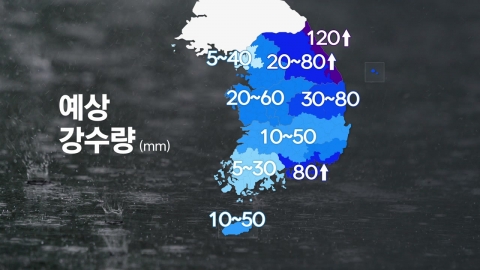■ Starring: Professor Seok Byung-hoon, Department of Economics at Ewha Womans University
* The text below may differ from the actual broadcast content, so please check the broadcast for more accurate information. Please specify [YTN News START] when quoting.
[Anchor]
We deliver the latest economic news quickly and kindly. Start Economy, today we will be joined by Seok Byung-hoon, professor of economics at Ewha Womans University. Welcome, professor. Recently, the price of cabbage has risen so much that it is called golden cabbage, and the common people's sigh is deepening every time they go grocery shopping, but vegetables that are equivalent to golden fever seem to stand out.
[Seok Byung Hoon]
That's right. This is because the prices of perilla leaves, lettuce, and cucumbers are also soaring. As of yesterday, according to the price information of the Korea Agro-Fisheries & Food Trade Corporation, the average retail price per 100 grams of sesame leaves reached 3,514 won late last month. It turns out that it's up about 1,000 won from two months ago. In fact, as of the 30th, 10 perilla leaves at large supermarkets in downtown Seoul became the highest price ever, with 179 won per sheet. And not only perilla leaves but also lettuce rose 46 percent in a year to 2,526 won per 100 grams at the end of last month, and the price of green peppers rose 16 percent in a year to 14,942 won per 10 grams of Oido, and 15 percent in a year to 1,823 won per 100 grams, making all vegetables have gone up in price.
[Anchor]
Looking at it, I'm more worried now because these are essential ingredients on our table, but isn't the kimchi-making season coming up? Please also point out the rise in cabbage prices.
[Seok Byung Hoon]
At the end of last month, the average price of a cabbage was 9,581 won. This price is 55% higher than the same period last time. Next, in the case of cabbage, the price per head rose 31% in a year to 5,943 won. So, the government said it would import Chinese cabbage and supply it to companies that make imported kimchi to stabilize the price of cabbage, but the volume of Chinese cabbage has not yet been released. That's why it seems that there is no price drop effect. As a result, there was a demand to purchase packaged kimchi in advance at large supermarkets. So if you look at the packaged kimchi section or the online mall of major kimchi manufacturers, the abandoned kimchi products are already out of stock. So, most of them sell only replacements for cabbage kimchi, such as sliced cabbage, young radish kimchi, and Chonggak kimchi. The raw cabbage itself is also in short supply, so some marts are even limiting the purchase volume that only three cabbages can be bought per person.
[Anchor]
In the end, the reason why vegetable prices continue to rise without knowing that they are so high is because of the hot weather and heavy rain this summer, right?
[Seok Byung Hoon]
That's right. Heat waves and heavy rains are believed to have had the greatest impact. For example, in the case of cabbage, cabbage is a crop that grows well at cool temperatures of 18 to 20. However, not only was the production of highland cabbage not good due to the high temperature in the summer, but autumn cabbage was planted in Jeollanam-do in early September, and the highest daytime temperature reached 35 degrees until mid-September. That's why the cabbage has been hindered by the late heat. In addition, according to the Ministry of Agriculture, Food and Rural Affairs, autumn cabbage harvests are expected to be 2.7% lower than last year because heavy rains have destroyed part of the plantation in Jeollanam-do. The same goes for other crops. Prices are now rising because distribution volume has decreased due to damage to farms or sluggish growth, but the government is optimistic that prices will gradually stabilize as temperatures drop and the cultivation environment improves. However, since abnormal temperatures will continue to occur now, it is believed that the only solution for now is to increase supply when prices rise through imports to manage agricultural prices stably.
[Anchor]
Some local marts say that you have to open run to buy cabbage, but this seems to be happening because prices are high. Let's talk about high interest rates, not high prices. Household loan interest rates began to rise again, which I thought might have been in a lull for a while?
[Seok Byung Hoon]
That's right. In the case of loan interest rates now, it is not expected to fall significantly for the time being. Because the market interest rate has continued to fall due to the U.S. Fed's cut in the benchmark interest rate, but commercial banks are expected to continue raising the interest rate in calculating the loan rate by adding additional interest rates to the indicator rate, so the loan rate itself, which combines the additional rate and the indicator rate, is likely to not change significantly. In the case of Woori Bank, the interest rate on the mortgage loan will be raised from 0.1 to 0.2 percentage points from today. The interest rate on jeonse loans will also be raised by 0.2 percentage points. Shinhan Bank is also planning to raise the interest rate on new loans by 0.1 to 0.2 percentage points and the interest rate on jeonse loans by 45 percentage points from the day after tomorrow. Starting the day after tomorrow, Kookmin Bank is also planning to raise the interest rates of both Judeam University lease loans and credit loans by 0.25 percentage points. In the meantime, NH Nonghyup Bank has been raising interest rates more, but on the 24th of last month, it reduced the preferential interest rate applied to credit loans by 0.1 to 0.3 percentage points, which has the same effect as a rate hike. So, I believe that there is a high possibility of continuing to raise the additional interest rate in this way.
[Anchor]
Looking at the graph now, each bank has a slightly different timing and application target, but last month, banks refrained from raising interest rates on household loans. But why does it start to post again after a little over a month?
[Suk Byung-hoon]
This is because household loans are increasing at a rapid pace again in the fall moving season. In fact, if you look at the balance of household loans of the five major banks, it increased by nearly 7.2 trillion won in July compared to the previous month and 9.62 trillion won in August. As a result, the five major banks raised lending rates by raising additional interest rates to curb the increase in household loans. Then, at the end of August, the financial authorities suddenly ordered them to refrain from raising interest rates. So now, we've stopped raising the loan rate and instead raised the loan threshold by reducing the loan limit or making the terms of the loan strict. Then, the controversy over government finance was raised, and the financial authorities emphasized freedom again and started. Then, banks raised interest rates again. The increase in household loans in September is also not unusual. In September, it increased by 4.2545 trillion won compared to the previous month. After the Chuseok holiday, there was a surge of 2.1759 trillion won in seven business days alone. This is because the demand for household loans has increased because the autumn moving season has come. In September, despite the short business days of banks due to the Chuseok holiday, household loans have already increased by more than 4.2 trillion won, and to prevent this, not only the five major banks but also local banks will continue to increase their lending limits and conditions, while raising additional interest rates. If that happens, banks will naturally face criticism that the market interest rate falls as the base rate goes down from the U.S. Fed, but the additional interest rate they attach goes up, so they will be criticized for increasing profits by trading interest.
[Anchor]
Let's move on to the base rate. In the U.S., there will be an additional rate cut within the year, and this is because of Fed Chairman Powell's remarks?
[Seok Byung Hoon]
This is due to comments made by Fed Chairman Jerome Powell at the annual meeting of the National Federation of Real Economics on the 30th local time. So the Federal Open Market Committee said that it is not in a hurry to cut interest rates quickly. Then he said that if the economy goes as expected, the remaining two meetings this year will cut interest rates by 0.25 percentage points, totaling another 0.5 percentage points within the year. So originally, expectations spread throughout the market that it would be a big cut of 0.5 percentage points in November. That expectation has now eased. Because the current state of the U.S. economy is solid, there is no recession or anything to the extent that it is rushing to cut interest rates. The data came out. According to the August job turnover report released by the U.S. Department of Labor, the number of job openings was 8.04 million, up 300,000 from the previous month. Then there's 400,000 more cases than the market forecast, so there's data showing that the labor market is rapidly cooling, so there's a low risk of a recession, so that's why I think that's why the Fed Chairman Jerome Powell's statement is valid.
[Anchor]
In the end, the expectation that the U.S. economy will make a soft landing in the future seems to have widened the options, but won't these expectations affect investment sentiment in the end?
[Seok Byung Hoon]
In the short term, expectations were originally prevalent for a 0.5 percentage point cut. It said it would only slightly cut that to 0.25 percentage points next month, which could cause the stock price to fall in the short term. But in the medium to long term, this seems to be good news. Because the Fed's sharp cut in the benchmark interest rate is called a recession and hard landing, and it was predicted that it would cut the benchmark interest rate sharply due to the risk of hard landing. Rather, it is not necessary to do so in the August job search report released by the U.S. Department of Labor, and Fed Chairman Jerome Powell expressed confidence that the U.S. economy can stabilize prices without a hard landing. In the case of Korea, especially now, exports to the United States are the largest. As the largest exporter, the good U.S. economy suggests that Korea's exports to the U.S. will continue to be strong, so it is good for both the global economy and the Korean economy, and the stock price will rise in the mid- to long-term.
[Anchor]
So far, I was with Seok Byung-hoon, a professor of economics at Ewha Womans University. Thank you.
※ 'Your report becomes news'
[Kakao Talk] YTN Search and Add Channel
[Phone] 02-398-8585
[Mail] social@ytn. co. kr
[Copyright holder (c) YTN Unauthorized reproduction, redistribution and use of AI data prohibited]
Economy
View the full list of articles- "Cabbage and radishes are expensive. What other ingredients?" ...Seasoning ingredients are on the decline. [Anchor Report]
- LH issues $500 million public offering bond...For the first time since September last year.
- The government will strengthen the competitiveness of the service industry and promote the development of marriage services.
- [Economy pick] 700 million house and 1.4 billion house...'Transfer' Led By Buying

![[Weather] Heavy rain on the west coast and a storm surge warning...120mm overnight in Gangwon-do](https://www.ytn.co.kr/img/news/default_img.jpg)





